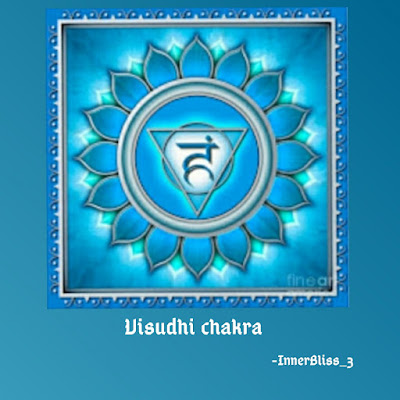7 Chakras of life and their significance in Yogic culture
Chakras
Chakras are various focal points used in numerous ancient meditation practices. The concept was found in the early traditions of Hinduism. There is a difference in belief in the number of Chakras as Chakras were mentioned in various Buddhist writings as well. According to Hinduism, there are 6 or 7 Chakras but various Buddhist writings mentioned 5 Chakras.
Early Sanskrit texts speak of them both as meditative
visualizations combining flowers and mantras and as physical entities in the
body. Some modern interpreters speak of them as complexes of electromagnetic
variety, the precise degree, and variety of which directly arise from a
synthetic average of all positive and negative so-called "fields",
thus eventuating the complex Nadi.
Within Kundalini
Yoga, the techniques of Breath exercises, Visualizations, Mudras, Bandhas, Kriyas, and Mantras are
focused on manipulating the flow of subtle energy through Chakras.
Now, let us explore, enumerate, and explain the science of
Chakras.
It is generally said and believed "Kundalini,
Chakras, and Nadis have no physical connection"
Now, let us comprehend the science of Tantra Vidya.
According to Sat-Chakra-Nirupans, there are seven major
centers of consciousness or Chakras within the human body. Major Chakras
are Muladhara Chakra, Svadhisthana Chakra, Nabhi Chakra, Anahata
Chakra, Visudhi Chakra, Ajna Chakra, and Sahasrara Chakra but
according to Akhand Sutra, there are following ten major centers of
consciousness.
Now let's discuss 7 Major Chakras and their
physical significance in our bodies.
Muladhara Chakra:
Color- Red
The first Basic Root Chakra is the lowest center of
consciousness.
It is located in the pelvis and is associated with
Annamaya-Kosha, the sheath made of food.
It is responsible for integrated health and well being.
Svadhisthana Chakra:
Color- Orange
It is located in the sacral part of the abdomen is
associated with emotional health.
It is also associated with Pranamaya-Kosha, the sheath made
of emotions.
This center is associated with the sacral parasympathetic
nervous system and the reproductive hormones and Ojas Shakti.
Nabhi Chakra or Manipura Chakras:
Color- Yellow
The third center of consciousness is associated with the lower part of the abdomen and lumbar vertebrae.
It is associated with Manomaya-Kosha, the sheath of the
concrete mind, and the Adrenal gland.
It is responsible for the concrete mind.
Anahata Chakra:
Color- Green
The fourth center of consciousness is associated with the
upper thoracic vertebrae, heart, and lungs.
It is primarily associated with the sympathetic nervous
system and the Thymus gland.
It is also responsible for the fluctuating nature of the
concrete mind.
Visudhi Chakra:
Color- Blue
The fifth center of consciousness is associated with
cervical vertebrae, thyroid, and parathyroid glands.
Ajna Chakra:
Color- Indigo
The sixth center of consciousness is located between the
eyebrows.
It is associated with the brainstem and pituitary gland.
It is also associated with Vigyanmaya-Kosha, the sheath of
the abstract mind.
Sahasrara Chakra:
Color- Ultra Violet
The center is primarily associated with the three outer
layers of the neocortex of the human brain.
It is also associated with Anandamaya-Kosha, the sheath of
a blissful mind.
It is associated with the Chakral Yoga and Antar Yoga stages
of Akhand Yoga.










Comments
Post a Comment